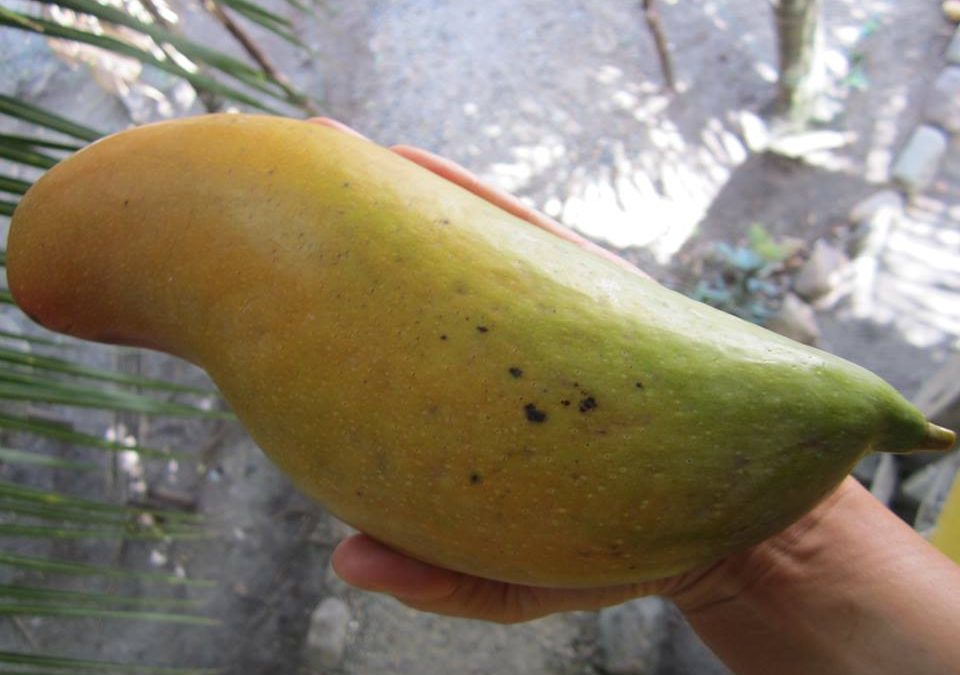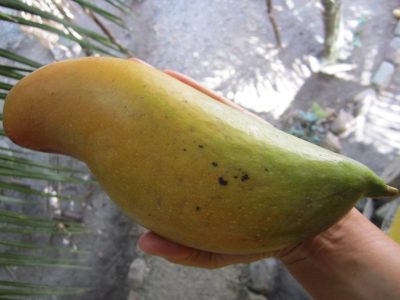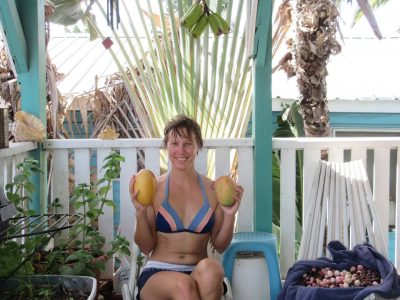
Twelve Things You Should Eat and Drink in Placencia, Belize!
May 23, 2019
Belize’s Incredible Edible Seaweed!
September 5, 2019
Its everybody’s favorite time of year! Here in Belize one of the tropical world’s most famous fruits is the mango. Mangifera indica is related to our native cashew trees but originated in India where it was domesticated over 4,000 years ago. Mangoes were introduced into the Caribbean in the 1700s and spread quickly across the region. There are as many as 900 different types, each with their own taste, size, shape and unique name. In Placencia village you can find at least 15 varieties: blue mangoes; black mangoes; white mangoes; the slipper shaped thundershaw; the famous Julie mango; the tiny sweet judge-wig; apple mango, so named because of its round shape; the garlic mango, which has a slight garlicky aftertaste when you bite into it; hairy mango with its long stringy fibers; the ballet shoe shaped slippers mango, the hybrids Number 11 and 13; the Hayden and the so named common mango. Common mango trees can reach a hundred feet high, but thanks to Hurricane Iris none of that size remain on the peninsula. Mangoes and cashews are both members of the Anacardiaceae family and so mangoes contain traces of the caustic anacardic oils found in un-processed cashew seeds. Those who are allergic to mangoes may develop rashes from eating and handling the fruit or even the leaves of the tree. While this extremely popular fruit can be found growing wild as part of the littoral forest it is most often encountered planted in someone’s yard or flourishing in empty lots and along the roadside.
During mango season, which typically runs from May through September, you can find mangoes for sale at local fruit and vegetable stands and many restaurants on the peninsula showcase fresh mango in fruit salads, desserts and blended drinks. Mango trees are so productive that many often rot under the tree if children don’t get to them first. “Stoning” mangoes down out of the trees is a cherished summertime pastime for generations of Belizeans. Like a number of other fruits in Belize we enjoy mangoes both ripe and green. Full but unripe or partially ripe mangoes are peeled; the flesh sliced off the seed, put in a plastic bag with salt and/or hot pepper and sold on the street as a popular snack. This ubiquitous combination of green mango and salt is a treat found in homes across the country. It also makes a great boca with a cold beer or cocktail. You can also process your green mangoes into a delicious chutney. Ask around Placencia to find out who has some for sale if you don’t want to make your own. Green mangoes cooked into a sauce with brown sugar and cinnamon taste almost exactly like applesauce. Apart from enjoying the fresh ripe fruit off the tree, local preparations include stewing the entire peeled ripe fruit, seed and all, in brown sugar. With trees producing huge quantities of the fruit, mango wine is another popular way to deal with the overload of ripe mangoes. Or freeze your surplus so you can enjoy a luxurious mango smoothie when the season ends. Make mango cheesecake, mango crumble, mango juice, mango jam, mango BBQ sauce or mango margaritas. For me, nothing beats simply biting into a perfectly ripe, aromatic mango as the juice runs down your arms to the elbow. However you enjoy it, don’t miss out on mango season in our beautiful jewel Belize!
Lyra Spang is owner/guide of Taste Belize Tours, a unique cultural & culinary tour company. She writes about food whenever she can. tastebelize.com/ tastebelize@gmail.com.



